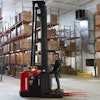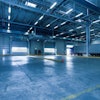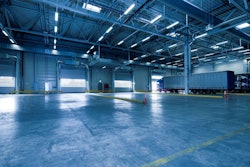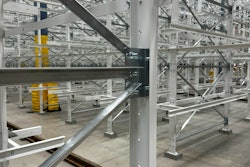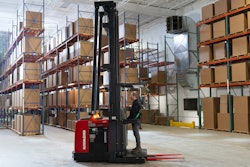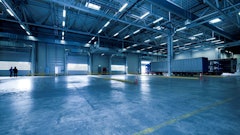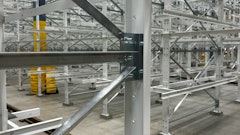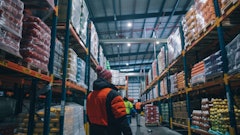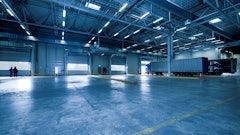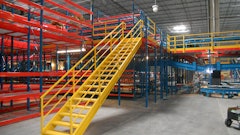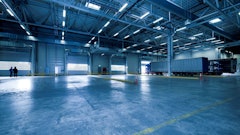
Think ahead to your next distribution and fulfillment project. Should you be considering factors beyond just square footage and shelving?
It’s a given that planning is more complicated than it used to be. Today’s fast-paced logistics landscape makes it almost certain that new strategic thinking will be required.
Evolving goals
The core objectives of distribution and fulfillment haven’t changed since the Industrial Revolution. Maximizing storage, minimizing costs and timely deliveries are still at the heart of logistics. The balance of costs, labor and land are still the factors that can make or break decisions today. However, the tools and technologies driving those goals have evolved dramatically.
In the dynamic world of food logistics and cold chain management, distribution and fulfillment centers are no longer mere storage facilities: They are intelligent hubs, driving efficiency and sustainability.
This landscape has led to better technology at lower costs, which is further enhancing the business case for automation in distribution and fulfillment applications, giving even more reason to consider automation early on in your planning cycle.
Technology impacts: From R&D to off the shelf
Over 25 years ago, deploying robotic palletizers meant launching an ambitious R&D project that would require dedicated teams of programmers and engineers to design, build and rigorously test even the most fundamental functions. The process often demanded months of meetings and painstaking requirements gathering just to create a basic concept. Early adopters contended with drawn-out conceptual phases and technical hurdles at every step.
Today’s market is saturated with OEMs and integrators competing to deliver the most efficient, cost-effective solutions, driving innovation and lowering barriers to entry.
Those early trials now stand in stark contrast to today’s reality. Advanced computer simulations and augmented reality empower integrators to validate entire system designs virtually. This process means that every requirement is met before a customer even signs a purchase order. These powerful tools accelerate decision-making, reduce risk and make innovative palletizing solutions instantly accessible.
Robotics-as-a-service models and low-cost solutions have surged, with certain collaborative robots (cobots) and autonomous mobile robotic (AMR) applications now available off the shelf, significantly lowering entry barriers. Low-cost, off-the-shelf allows even small- to medium-sized operations to invest in automation without navigating intimidating engineering hurdles and prohibitive upfront expenses.
Facility design: Building for automation
Modern technological developments have fundamentally changed business operations and facility design and construction methodologies. Today’s warehouses extend far beyond basic four-wall structures, incorporating fully integrated systems that maximize both utility efficiency and storage space utilization. Automated storage and retrieval systems (ASRS) seek to maximize vertical storage, while conventional methods are limited by the reach height of the forklift being used in the warehouse. This technology lets us store more products in a smaller footprint, without sacrificing operational efficiency. Increased power requirements for automated equipment are offset by lower labor costs, and in cold storage applications by shrinking temperature-controlled spaces.
For decades, conventional warehouses were constructed with clearances dictated by the reach of standard forklift equipment, typically around 32 feet in clear height. In contrast, automated storage and retrieval systems allow for high-bay facilities soaring over 100 feet, utilizing vertical space far beyond the reach of conventional forklifts.
Warehouses at these extreme heights (100-plus feet) typically employ robust foundations, thicker slabs and a rack-supported building design, where the storage racks themselves serve as the structural skeleton of the building and eliminate the need for separate supporting structures. With this increased height, foundation and slab requirements can increase dramatically compared to conventional storage solutions.
This is an important factor that is sometimes overlooked. Due to the increased load on a per square foot basis, this can often lead to increased foundational requirements, which may lead to soil improvement requirements or increased slab thickness.
Choosing the right partners
Success in automation hinges on collaboration. The most effective projects are led by multidisciplinary teams of engineers, constructors, integrators, project managers, and operations experts, working in sync to take an idea from concept to commissioning.
Partners that are technology-neutral and solution-focused will evaluate all possible technologies, recommending only solutions that maximize payback within the context of all the factors that affect your business. In choosing a partner, it is important to evaluate their track record in safety, risk management, sustainability, and adaptability to high-variability environments.
Partnerships built on shared success foster agile networks that respond to real-time data and evolving customer demands, turning complexity into competitive advantage.
Designing from the inside out
Rethinking the automated warehouse from the ground up requires a blend of strategic planning, technological integration and collaborative effort. Lean principles play a pivotal role here, emphasizing waste reduction and efficiency.
When facilities are designed from the inside-out, the starting point will be core processes like inventory rotation and order fulfillment. These warehouses can achieve more sustainable, cost-effective outcomes.
Ultimately, starting with the end in mind not only minimizes disruptions but also unlocks new opportunities for growth in the fast-moving world of food logistics.

